Dear visitor,
The Armenian Genocide Museum-Institute will be closed from December 30 till January 7, 2021.
Sincerely,
The Armenian Genocide Museum-Institute Foundation

The Activities Of The Armenian Catholic Community
25.12.2020
The diocese of Mardin of the Armenian Catholic See was, with its 22.000 believers, subjected to deportation in 1915. Primate Archbishop Ignatius Maloyan was arrested and killed on the deportation route with other 12 clergymen in the same year. The nuns of the Armenian Order of the Immaculate Conception, founded in Constantinople in 1847, also suffered losses in 1915, but all the remaining members of the congregation continued their orphan care work. They took over the care of 100 orphans in the orphanage opened by the Pope's Apostolic Delegate Angelo Dolci in the Shishli district of Constantinople in 1918. The orphanage was placed under the auspices of the Mkhitarist Congregation of Venice and was named after Pope Benedict XV. The orphans were moved to Galata, to the Austrian school of St. George, in 1919. Thanks to Dolci's mediation, the Mkhitarist Congregation assumed responsibility for the Galata orphanage in November 1920, when it was moved to Kadiköy Father Hakob Tiroyan assumed its directorship and had the support of Fr. Khoren Sinanyan and Fr. Yeprem Abrahamyan.

The Activities of the Armenian Evangelical Community
19.12.2020
The Armenian Evangelical community in the Ottoman Empire was also deported and suffered considerable losses during the Armenian Genocide. Meanwhile, the representatives of the Evangelical community actively participated both in resistance and salvation of Armenians. Reverend Tigran Andreasyan was one of the leaders of Musa-Ler self-defense and, in addition to resisting Turkish troops, tried to arrange the safe movement of Armenian women and children. Reverend Hovhannes Eskidjyan, pastor of the Emmanuel Armenian Evangelical Church in Aleppo, was a key figure in organizing relief work in the city. He cooperated with the priest Harutyun Yesayan in aid distribution.

AGMI Condemns new Phase in Ethnic Cleansing of Artsakh's Indigenous Armenian Population
08.12.2020
As a consequence of the recent war, the ethnic cleansing of the indigenous Armenian population in and around the Republic of Artsakh, which started over a century ago, has entered a new phase. Not only has the Armenian population of Artsakh and their historic homeland been physically attacked and brutally destroyed through the deployment of terrorists and mercenaries and the use of prohibited weapons, but the indigenous Armenians have been and are continuing to be uprooted and displaced against their will and under threat to their lives and dignity, leaving behind their historical, cultural, religious heritage and way of life.
Already the new occupants of these lands, where Armenians lived for millennia, are obliterating traces of the Armenian presence, distorting historical memory, propagating fake history, and denying the Armenian origin and stewardship of the historical and cultural sites that, as a consequence of Azerbaijani and Turkey's aggression against the peaceful population, have passed out of Armenian control.
Meanwhile, apparent war crimes are being committed against the Armenian POWs and civilians. The policy of hatred and anti-Armenianism has reached a new level.

Preserve Artsakh: An Open Letter to the World Community
14.11.2020
Academics call on global institutions to save Armenian heritage before it's too late
New York City, Nov. 12, 2020 (GLOBE NEWSWIRE) -- The end to active combat in the 2020 Nagorno Karabakh war is far from the end of the war on a key victim: the rich and irreplaceable cultural heritage of Artsakh, as the republic is known to Armenians.
Only two years ago, Armenian art, history, and culture were celebrated by some of the world’s most acclaimed cultural institutions. Armenia! at the Metropolitan Museum of Art was a major international exhibition of Armenian medieval art. The wonders on display broke attendance records, earned critical praise, and demonstrated the major contributions of Armenians to world civilization. The Smithsonian Folklife Festival celebrated Armenian artistic and cultural traditions during its annual interactive exposition on the National Mall in Washington DC, drawing record numbers. That same year, the global consortium of French-speaking nations gathered in Armenia’s capital of Yerevan for the Summit of the Francophonie, hosting hundreds of world leaders, visitors and the international media.

FRENCH PARLIAMENTARY DELEGATION IN THE ARMENIAN GENOCIDE MEMORIAL
25.10.2020
Today the parliamentary delegation of the French Republic in Armenia visited the memorial to the victims of the Armenian Genocide, laid flowers at the eternal fire, honored the memory of the victims.
The delegation from France was accompanied by Vladimir Vardanyan, Deputy of RA National Assembly, Jonathan Lacotte, the Ambassador Extraordinary and Plenipotentiary of France to Armenia, Hasmik Tolmajyan, the Ambassador Extraordinary and Plenipotentiary of Armenia to France. The visitors were welcomed by AGMI Deputy Director Lusine Abrahamyan.
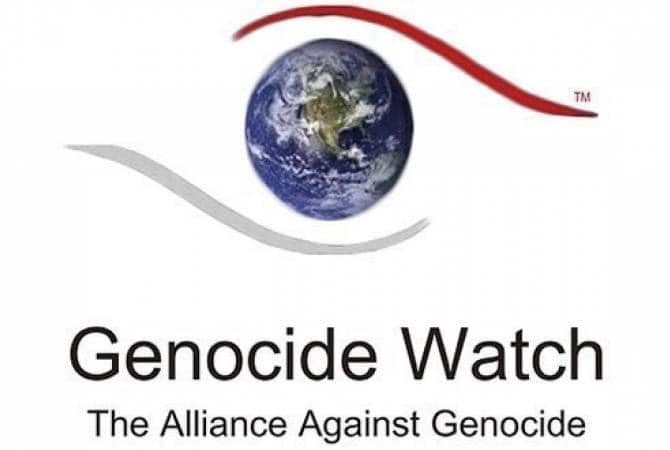
GENOCIDE EMERGENCY: AZERBAIJAN IN ARTSAKH
24.10.2020
In September 2020, Azerbaijani troops crossed the "Line of Contact" dividing Karabakh. Turkey intervened on the side of Azerbaijan. Armenia supports Artsakh. Azerbaijan uses laser guided drones supplied by Turkey and Israel to target Armenian troops, villages and civilians. Azerbaijani military offensives against civilians are war crimes under the Geneva Conventions.
The establishment of the Azerbaijan Democratic Republic in 1918 began with the systematic extermination of the Armenian populations living in Azerbaijan and the provinces of Nakhichevan and Nagorno-Karabakh. Often viewed as an extension of the 1915 deportation and genocide of Ottoman Armenians, Azerbaijani forces in Baku slaughtered at least 15,000 Armenian civilians in the 'September Days.' Azerbaijanis also slaughtered 1,000 Armenians in 1919-1920 in the Karabakh cities of Shusha and Khaibalikend. These historic genocidal massacres contribute to Armenian distrust of Azerbaijan today.
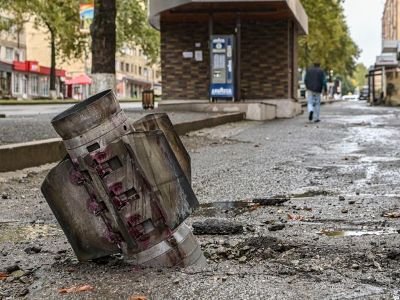
Statement from a group of Genocide scholars on the Imminent Genocidal Threat deriving from Azerbaijan and Turkey against Artsakh (Nagorno-Karabakh)
23.10.2020
Since September 27, 2020, Azerbaijan, backed by Turkey, initiated a large-scale, unprovoked war against the Republic of Artsakh and the Republic of Armenia. Over the last days Azerbaijani forces have intentionally been attacking civilians and civilian infrastructures, and they have heavily shelled Stepanakert, Shushi, Mardakert, Hadrut, and other settlements with cluster munitions and other weapons prohibited by international humanitarian laws.

MASSACRES OF BAKU ARMENIANS IN 1918
IN SEPTEMBER 1918, IN BAKU AROUND 30 THOUSAND ARMENIANS FELL VICTIM OF VIOLENCE AND MASSACRES.
17.10.2020
Violating the borders established by the Treaty of Brest-Litovsk, in the spring of 1918 Turkish troops invaded Transcaucasia. Under permission from the government of the newly formed Azerbaijan Democratic Republic, the total number of Turkish forces on Baku front at the end of May exceeded 20,000, joined by 2,000 Kurdish detachments. On July 31, the “Caucasian Muslim Army” led by Nouri Pasha launched a large-scale attack, occupying Baku on the night of September 14-15. Despite the security assurances given to the Danish and Iranian consuls, Turkish officers under the command of Minister of Interior Khan Jivanshir with the participation of the regular Turkish army and the Tatars of the surrounding villages from September 15 till 17 had massacred thousands of people looting their property.
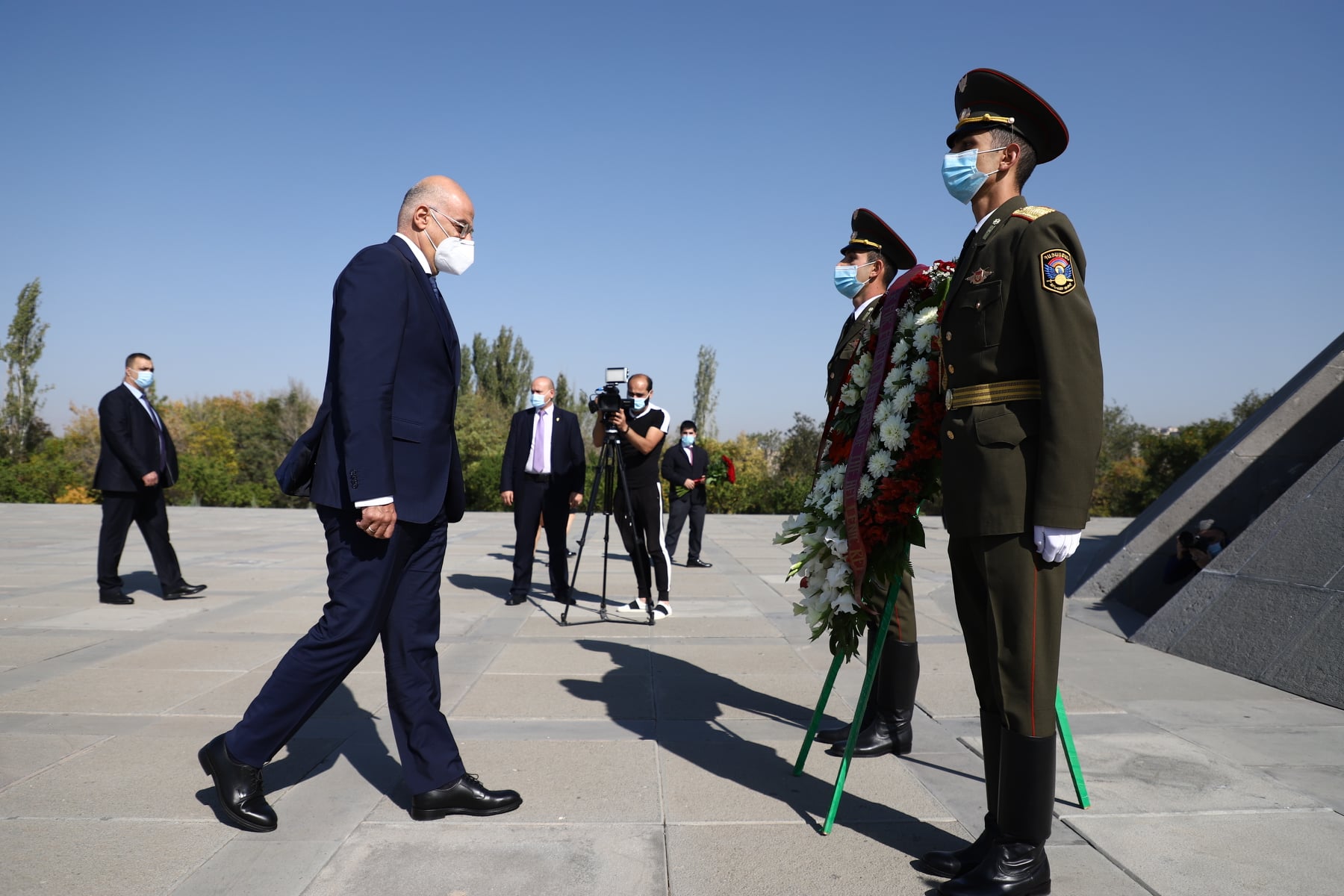
THE MINISTER OF FOREIGN AFFAIRS OF THE HELLENIC REPUBLIC PAID TRIBUTE
16.10.2020
On October 16, Nicos Dendias, the minister of foreign affairs of the Hellenic Republic, Avet Adonts, the Deputy Minister of Foreign Affairs of the Republic of Armenia, Fadeh Charchoghlyan, Armenian Ambassador to Greece and Evangelos Tournakis, Ambassador Extraordinary and Plenipotentiary of Greece to Armenia, visited the Armenian Genocide memorial. Harutyun Marutyan, the director of the Armenian Genocide Museum-Institute, welcomed the high-ranking guests and presented the history of the construction of the memorial. Minister Dendias laid a wreath at the memorial to the victims of the Armenian Genocide, laid flowers at the eternal fire and observed a minute of silence in memory of the victims.
The delegation, led by Minister Dendias, also visited the Armenian Genocide Museum, where Lousine Abrahamyan, the deputy director of the museum presented the documents and exhibits related to the first genocide of the 20th century. At the end of the visit, Nicos Dendias made a note in the Memory Book of Honorable Guests, where he particularly noted:

SELF-DEFENSE OF HADJIN, MARCH-OCTOBER 1920
15.10.2020
The city of Hadjin is situated in historic Cilicia. Before WWI the city had some 35,000 Armenian inhabitants. During the catastrophic days of 1915 they were all deported to Deir-el-Zor, where many of them perished.
The defeat of Ottoman Empire in the autumn of 1918 and the withdrawal of Turkish troops from Cilicia allowed some 8,000 survivors of the Genocide to return to their homes in Hadjin. However, the growth of the Turkish nationalistic movement in 1919 forced the city’s population to prepare to defend themselves.

AZERBAIJAN’S HANDWRITING OF WAR CRIMES IS UNCHANGING
12.10.2020
After the annexation of Nagorno-Karabakh to Azerbaijan (1921), the destruction of local Armenian historical-architectural monuments became a part of Azerbaijan's state policy, aiming to eliminate the Armenian traces. The Azerbaijani methods for the destruction of monuments almost identically repeated the Turkish policy of cultural genocide.
The Azerbaijani aggression for the destruction of Armenian monuments reached unprecedented levels during 1988-1994. The Azerbaijani armed forces targeted Armenian monuments with various weapons. During the mentioned period, the cathedrals of Amaras (4th-19th centuries), Gandzasar (13th century), Dadivank (4th-13th centuries), the church of Togh village, Yeghnasar monastery and dozens of other monuments were shelled by long-distance artillery. On January 20th, 1993, the Gandzasar cathedral was also shelled by two Azerbaijani warplanes.

THE POLICIES OF GENOCIDAL STATES ARE DOOMED TO FAILURE
08.10.2020
On September 27th, Azerbaijan, with unconcealed support and participation of Turkey, has unleashed large-scale military operations along the entire line of contact with the Republic of Artsakh, targeting the civilian population, moreover, using banned weapons against them. Thousands of mercenaries and members of various terrorist groups are taking part in the aggression carried out by Azerbaijan against Armenians.
The non-condemned genocides, the silence and indifference of the international community, as well as the fact of impunity and denial, only contribute to the recurrence of this atrocious crime against humanity.

YES, IT IS GENOCIDAL
07.10.2020
On October 3, Armenia's Prime Minister Nikol Pashinyan in his address to the nation, stated: “The objective of Azerbaijani-Turkish bandits is not about claiming territory. Their objective is the Armenian people. Their objective is to continue their genocidal policy. He had also stated on Twitter: “Why has Turkey returned to the South Caucasus 100 years later? To continue the Armenian Genocide.” The idea that the Armenian people are in danger of genocide was repeated in many other interviews and statements by the Armenian Ministry of Foreign Affairs.

THE MASSACRES OF ARMENIANS OF BAKU IN 1905
02.10.2020
The popular protests that took place in St Petersburg on January 9th, 1905 found their echo especially in other production centres in Russia. The protest movement’s waves reached the Caucasus, notably Tiflis, Batum and Baku. Workers began protests and strikes in Baku which culminated in the firing of several oil wells. These events were accompanied, in Caucasus Tatars circles, by anti-Armenian propaganda. Rumours were circulated that the Armenians were making preliminary preparations to massacre Muslims.
Soon the walls of Turkish and Russian houses were smeared with chalk and charcoal warning words such as “Ya Allah” (With God) and “Urus”.
The city mayor and provincial governor Nakashidze (was later assassinated by Martiros Ch’arukhchyan and Dro) told a group of Muslims about the Baku Armenians’ military mobilisation and suggested a form of reaction:
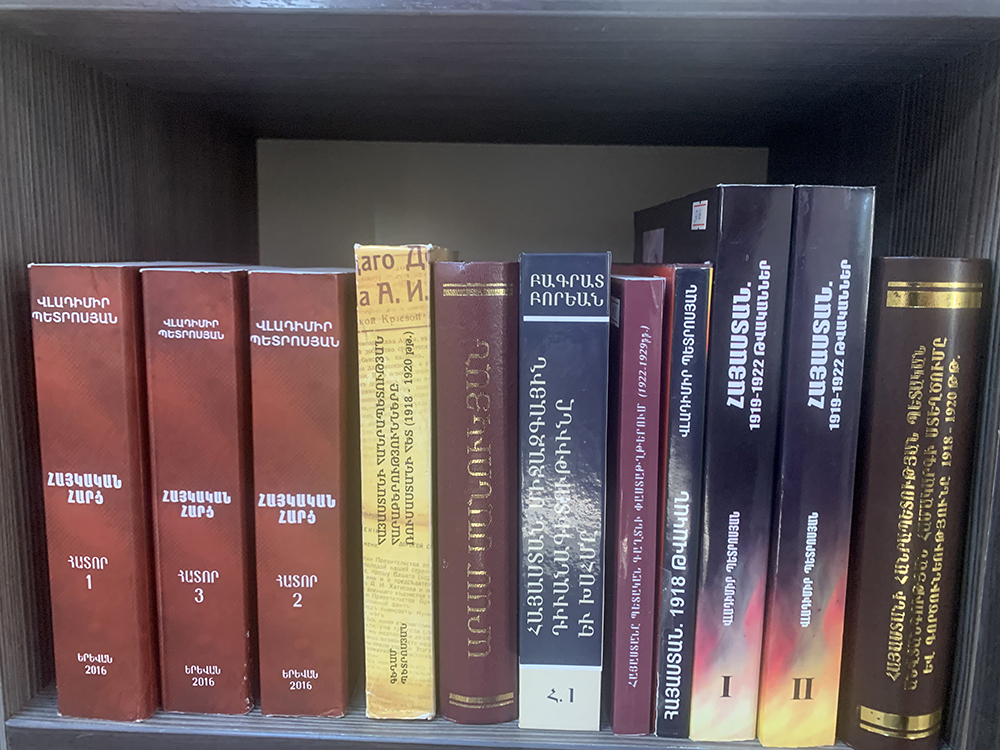
New books added to AGMI libarary collection
15.09.2020
During August-September 2020, nearly six hundred books were received in the library of the Armenian Genocide Museum-Institute Foundation by individual donations.
Among the donors are Vahan Ter-Ghevondyan, Director of the Mesrop Mashtots Institute of Ancient Manuscripts, citizens Frida Babayan and Hasmik Poghosyan.

Audio and Radio Guides for the Armenian Genocide Museum
12.09.2020
We are glad to inform that audio and radio guides donated by ARMSWISSBANK will start to be used in the Armenian Genocide Museum.
On 11 September, in the conference hall of the Armenian Genocide Museum-Institute Gevorg Machanyan, Executive Director of ARMSWISSBANK, gifted to AGMI Director Harutyun Marutyan 48 radio and 30 audio guides.

Aurora to Support the Reprint of “Ravished Armenia”
10.09.2020
A grant from Aurora will help the Armenian Genocide Museum-Institute to republish Aurora Mardiganian’s book with additional notes
The Aurora Humanitarian Initiative is glad to announce that it will support the Armenian Genocide Museum-Institute in its unprecedented efforts to republish “Ravished Armenia” by Aurora Mardiganian with additional references and explanatory notes. This unique publication in Armenian and English will mark the symbolic start of the Mémoires of Survivors of the Armenian Genocide Series, a milestone project of the Museum-Institute.
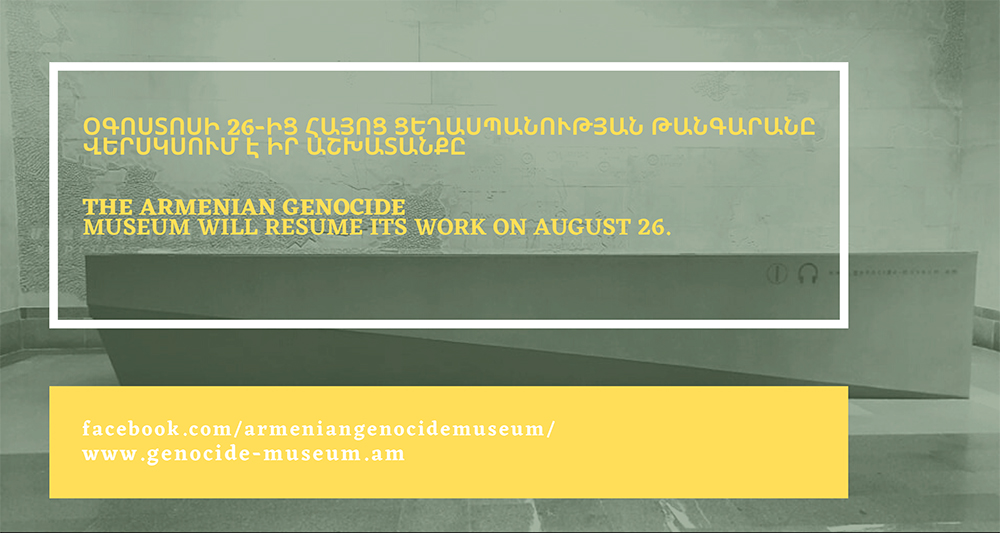
Announcement
24.08.2020
Dear visitors,
The Armenian Genocide Museum will resume its work on August 26. Due to technical reasons, the exhibition will be open partially (only the first floor) from Tuesday to Sunday, from 10:00 to 17:00, the last entrance for visitors is at 16:30. The museum will be closed for disinfection and ventilation purposes from 11:30 to 12:00 and from 14:00 to 14:30.
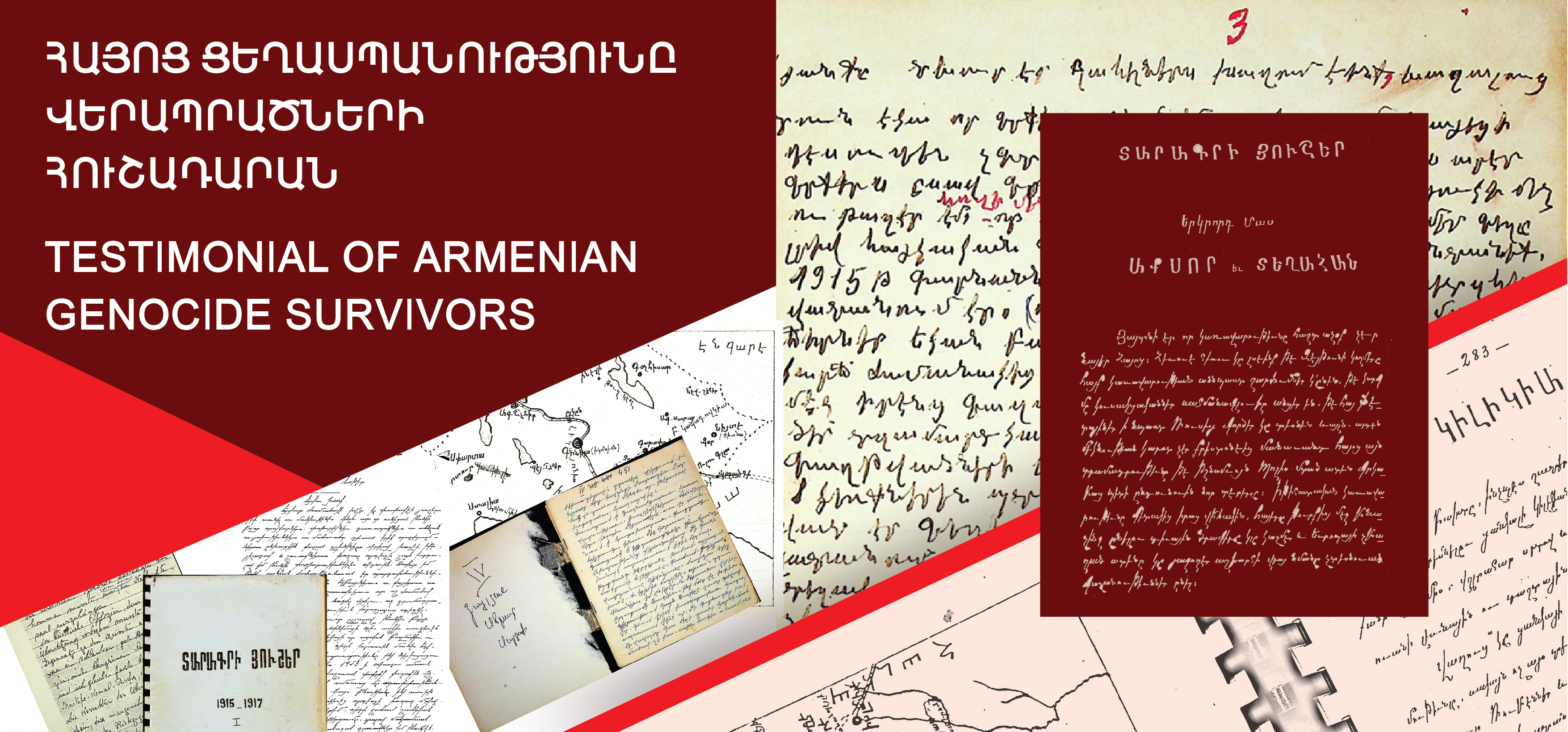
The AGMI Collection of Unpublished Memoirs
19.08.2020
A memoir is a descriptive story of an individual life or part of it, written by an eyewitness to the events that took place. Its main characteristic is sincerity. The author, as a rule, describes events impartially, as they happened, without editing or exaggeration.
This type of literary work is often written by individuals who don’t have a high standard of education or literary ability and, sometimes, even by semi-literary people.

Summer School for Teachers “Teaching the Armenian Genocide”
Was Held
01.08.2020
Summer school “Teaching the Armenian Genocide” was held at the Armenian Genocide Museum-Institute on 28-30 July. Due to the state of emergency in Armenia, the annual educational program was held online, though the methodology was the same: to train teachers, to deepen the knowledge on the history of the Armenian Genocide, taking into consideration the psychological peculiarities of the topic and current developments in genocide studies. The summer school was attended by 30 Armenian history teachers of elementary and high school; from Gegharkunik, Kotayk, Shirak, Ararat, Armavir, and Aragatsotn regions of the Republic of Armenia. The lectures were launched by the welcoming speech of AGMI Director Ph.D. in History Harutyun Marutyan.
The first speaker Ph.D. in Armenian language and literature Rubina Pirumyan made some methodological observations on teaching the topic at school. Afterward, AGMI Deputy Director Edita Gzoyan delivered a report titled “Genocide as an international crime: some legal issues”.

The Activities of Armenian Patriarchate of Constantinople
27.07.2020
The Ottoman government suspended the Patriarchate of Constantinople’s activities in August 1916, with Patriarch Zaven Yeghiayan being deported to Mosul, then to Baghdad. He supported the Armenian refugees and the Mosul Orphanage’s work even while he was in exile. The Patriarch returned from exile only on 19 February 1919. The (Armenian) National Relief body was created on 28 February 1919, under the supervision of the Patriarchate of Constantinople and through the Central Committee for Armenian Relief and Orphan Relief. The latter was directed by the national and public figure Matevos Epilghatyan. The organization was created to coordinate the work of liberating Armenian orphans and women from Muslim captivity and to provide material support to deportees returning from Mesopotamian camps. In this regard, a joint call was made by Patriarch Zaven, the leader of the Armenian Evangelical community Zenob Bezjyan and the Armenian Catholic Patriarchal Vicar Archbishop Augustinios Sayeghyan.
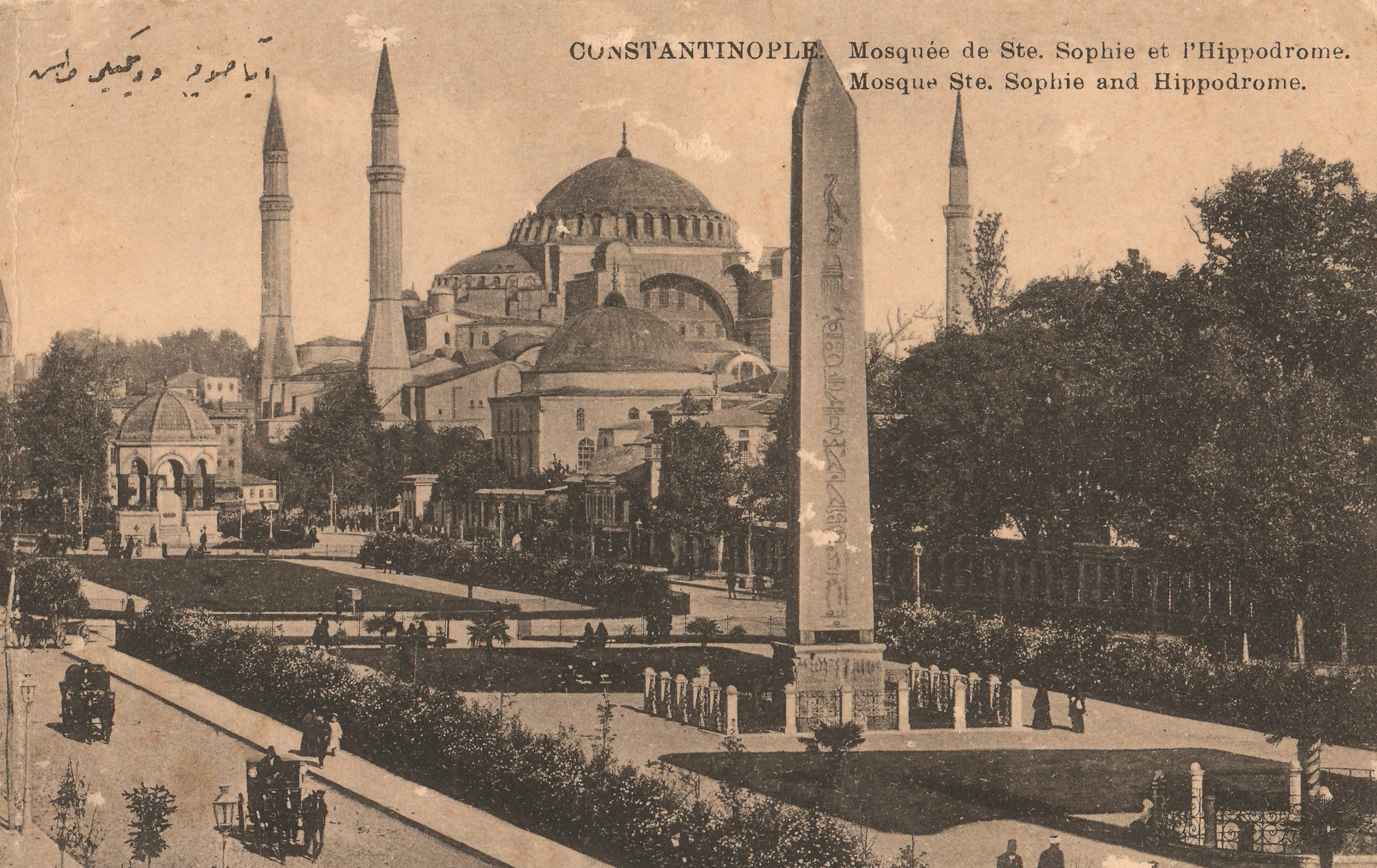
Statement by the Armenian Genocide Museum-Institute Foundation
14.07.2020
One of the components of the Armenian Genocide is cultural genocide. It did not start in 1915 and end in 1923 but continues to this day. It found its expression, a hundred years ago, both in Western Armenia and in other Armenian-populated regions of Ottoman Turkey. It was carried out not just against Armenians, but also against the other Christian peoples of the Ottoman Empire too.
The fact that, like the thousand-year old Armenian Church of the Apostles in Kars, dozens of other Christian churches continue to be converted into mosques, confirms that cultural genocide continues. One of its manifestations is the obsessive embezzlement of historic Christian remains that has been going on for decades, with ordinary citizens being involved in their eradication with the permission of the state. The destruction of the remaining traces of Christianity is on a massive scale and is, unfortunately, irreversible.

Raphael Lemkin 120
“One day I read in the newspapers that all Turkish criminals were to be released. I was shocked. A nation is killed, and the perpetrators have been set free.”
24.06.2020
June 24 marks the 120th anniversary of the birth of the prominent human rights activist and lawyer Rafael Lemkin, who made a great contribution to the development and definition of genocide as a separate science. It is noteworthy that the study of the issue of the Armenian Genocide has a special place in the latter’s enormous scientific heritage.
Raphael Lemkin was born on 24 June 1900 in Bezwodne, a village near Volkovyssky that was in the Russian Empire at that time. That is where Lemkin spent his childhood and adolescence, being interested in stories of mass murders.
In his autobiography, Lemkin wrote that he apparently came across the concept of mass atrocities while, at the age of 12, he was reading Quo Vadis by Henryk Sienkiewicz, often questioning his mother about such events, in particular the passage describing how Nero threw Christians to the lions and wondering how the emperor could have provided pleasure for the audience in such a way.

Uncle Sam, Mother Armenia and Two Orphans
12.06.2020
The photograph depicts a fund-raising initiative by the American Committee for Armenian-Syrian Relief in the city of Seattle for the starving Armenians. Symbolic heroes - Uncle Sam representing America, Mother Armenia and two Armenian orphans passing through the streets of the city - were calling the Americans to participate in a fund-raising. The car carried a poster ''Starving Armenia: help the children in need... Uncle Sam reaches for help today. Seattle performs its duty '' (1917).
The American Committee for Armenian and Syrian Relief, established by the initiative of the US Ambassador Henry Morgenthau in the Ottoman Empire in 1915, often organized movable exhibitions, aiming to inform the American public about the unprecedented sufferings of the Armenian people and urge them to participate in a fund-raising.

Children and Genocide
01.06.2020
Article 2(e) of the 1948 Convention on the Prevention and Punishment of the Crime of Genocide declares that “forcible child transfer committed with intent to destroy, in whole or in part, a national, ethnic, racial or religious group, as such amounts to genocide.”
Thus, forcible child transfer is one of the genocidal acts listed in Article 2 of the Genocide Convention. The act prohibits transferring children of the group to another group with intent to destroy national, religious, racial and ethnic groups in whole or in part. The arguments for including the forcible child transfer in the Genocide Convention were twofold. First, is the vulnerability of children, their “dependence, futurity, and malleability” and, second, the destructive consequences of this practice for the viability of the group.
Forcible child transfer operates in the borderline of cultural and biological genocides, and is unique in its application as constructs a new child identity through the destruction of the former. In line with the mission of the Genocide Convention which not only punishes the worst forms of violence, but also protects the human groups, forcible child transfer clause protects children as a nucleus of group viability.

Commemoration of the Greek Genocide Remembrance Day
19.05.2020
On May 19, the Greek Genocide Remembrance Day, the Union of Greek Communities of Armenia, representatives of the Embassy of the Hellenic Republic in Armenia, as well as the Director of the Armenian Genocide Museum-Institute Foundation, Dr Harutyun Marutyan and a senior researcher of AGMI Department of Organizing Museum Exhibitions Dr Tehmine Martoyan paid tribute to the memory of the innocent victims at the Armenian Genocide Memorial.
After the ceremony of laying flowers at the Eternal Fire, the President of the Union of Greek Communities of Armenia Maria Lazareva delivered a speech in memory and remembrance of the victims. Speeches were also delivered on behalf of the Greek Embassy, community representatives, followed by Mr. Harutyun Marutyan and Mrs. Tehmine Martoyan.

Greek Genocide Remembrance Day
19.05.2020
On 24 February 1994, the Parliament of the Hellenic Republic has declared May 19 as Greek Genocide Remembrance Day, which is associated with the arrival of Mustafa Kemal to Samsun. The Greek Genocide is also commemorated on September 14 (Deliberate extermination of Christians in Smyrna, then arson of the city in 1922).
In 19th century, although reforms were partly carried out in the Ottoman state, but Pontus Greek people undergoes trials. The 20th century was the peak.
Pontian populations were treated as inferior citizens; their presence was an obstacle to the implementation of the Young Turks’ nationalistic programs .
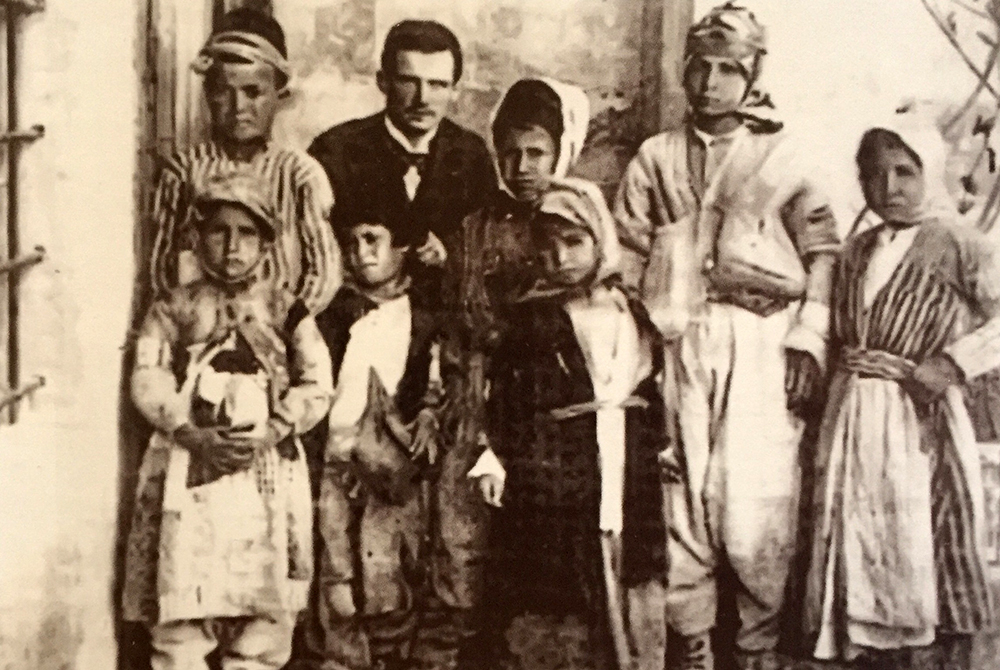
Germans are Living in Masbane: a Hiding Place for Armenians
12.05.2020
The brothers Bruno and Franz Eckert lived and worked in the Ottoman Empire from the 1890s until about 1910.
In 1897, 24-year old Franz Eckert (1873-1919), who was involved in missionary work through Johannes Lepsius, travelled to the Ottoman Empire to work in the city of Urfa. Lepsius saw, in Franz Eckert, who received pedagogical education, leadership and organizational qualities. During his more than 20 years in Urfa, Eckert headed the German Orphanage and Carpet Factory he created for Armenian children, where only they worked. (1)
In 1910, Eckert's younger brother Bruno (1885-1918) arrived in Urfa. He was a graduate of the University of Arts in Berlin and a professional painter. Despite their age difference of twelve years, the brothers were bound by a strong friendship and common interests. Bruno Eckert was needed both as a painter and as a draftsman in the carpet factory. (2)

Dear compatriots,
05.05.2020
This year April 24 commemoration was marked with unique activism in social media. Armenian Genocide Museum-Institute expresses its gratitude to all those users who have joined the call of the Museum-Institute by posting their family photos and stories related to the Armenian Genocide on their pages, sharing the frame with the slogan “I remember and demand,” and also those who have established direct contact with us.
Although in previous years, there were many heirs of Armenian Genocide victims and survivors sharing their family stories related to the Armenian Genocide, however, this year the phenomena was much more widespread due objective reasons.

The First Online Meeting of the AGMI Board of Trustees Took Place
04.05.2020
On April 29, 2020, the regular meeting of the Armenian Genocide Museum-Institute Foundation’s Board of Trustees took place in an online format. The board members Hovhannes Hovhannisyan, Vahram Ter-Matevosyan, Ashot Melkonyan, Ruben Melkonyan, Vasken Yacoubian, Hranush Kharatyan, Ruben Safrastyan, Vladimir Vardanyan and Ani Avagyan participated in the meeting chaired by Raymond Kevorkian. The AGMI Director Harutyun Marutyan also attended the meeting. By the invitation of the chair Raymond Kevorkian the AGMI Deputy Scientific Director Edita Gzoyan and the AGMI Academic Secretary Narine Margaryan were also present.
Harutyun Marutyan presented the results as well as the financial report of 2019, which was positively voted by the board members. The issues related to 2020, current programs, as well as some changes in 2020 plans due to the state of emergency caused by the epidemic were discussed.

The Centenial of Salih Zeki Bey’s Condemnation to Death
28.04.2020
100 years ago on this day, 28 April 1920, the Special Military Tribunal in Constantinople sentenced to death in absentia Salih Zeki Bey, the former governor of Der Zor and one of the main perpetrators of the Armenian Genocide, responsible for the massacres in Der Zor.
On 26 April 1916 Zeki was appointed as a governor of Der Zor. Shortly after taking office, he sent tens of thousands of exiled Armenians gathered in Der Zor and surrounding villages and towns to the depths of the desert and who were indiscriminately massacred by the groups formed and led by him. Approximately 192,750 exiled Armenians, who had arrived from Western Armenia, Cilicia, Asia Minor and other regions of the empire, were killed in the massacres of Der Zor.
After the armistice in the aftermath of World War One on 8 March 1919 by the decree of Sultan Z. Wahiduddin the Special Military Tribunal was established to prosecute those responsible for the deportations and massacres of Armenians and the criminals who were responsible for Turkey’s entry into the war.

Leadership of the Republic of Armenia Paid Tribute to the Memory of the Armenian Genocide Martyrs
24.04.2020
Today marks the 105th anniversary of the Armenian Genocide. From early morning, the leadership of the Republic of Armenia paid tribute to the memory of the victims of the Armenian Genocide.
RA President Armen Sarkissian, RA Prime Minister Nikol Pashinyan with his wife Anna Hakobyan, RA National Assembly Speaker Ararat Mirzoyan with his wife Gohar Abajyan, Catholicos of All Armenians Garegin II accompanied by clergy of Holy Etchmiadzin, President of the Artsakh Republic Arayik Harutyunyan, the mayor of Yerevan and other high-ranking officials paid tribute to the memory of Genocide martyrs at the Armenian Genocide Memorial. Spiritual leader and government officials laid wreaths at the memorial to the Armenian Genocide victims, than put flowers at the Eternal Fire. His Holiness Garegin II hold an Order of Intercession for the Holy martyrs of the Armenian Genocide.

“Now, More than Ever, France is Commited to Protecting the Memory of the Victims, Fighting Against Denial and Learning a Lesson From the Tragic Pages of History” Emmanuel Macron Sends Letter to the Ra President
24.04.2020
The President of the French Republic Emmanuel Macron sent a letter to the President of the Republic of Armenia Armen Sarkissian on the occasion of the 105th anniversary of the Armenian Genocide.
The letter reads:
“Mr. President,
Dear friend,
On this remembrance day of the 105th anniversary of the Armenian Genocide, I am sending my best brotherly and friendly greetings to you and the Armenian people.

Self-defense in Cilicia during the Armenian Genocide.
Dedicated to the centennial of self-defense battles of Marash, Hadjin, Aintab
23.04.2020
2020 marks the 100th anniversary of Marash, Hadjin and Aintab self-defense battles and the Armenian Genocide Museum-Institute together with the Catholicosate of Cilicia have planned an international conference and a temporary exhibition to be held on April 16-17. However, due to the current situation with the pandemic, the conference was postponed while the exhibition will be presented to the public in an online format on the official website and the Facebook platform of the Armenian Genocide Museum-Institute.
The temporary exhibition “Self-Defense in Cilicia during the Armenian Genocide” is bilingual (Armenian and English) and is composed of eleven panels.

The Actions Taken by Catholicossate of the Great House of Cilicia
18.04.2020
His Holiness Sahak II Khapayan, Catholicos of the Great House of Cilicia, closely followed the fate of the Armenian deportees exiled to the Mesopotamian deserts during the years of the Armenian Genocide. The Catholicos moved from the Catholicossate in Sis to Aleppo in 1915, created the Deportees’ Committee and appealed to Constantinople and abroad for help. He had meetings with the Governor of the province of Aleppo, Jelal Bey, obtaining permission for several priests to carry out their duties. The latter went to Bap, Manbij, Deir Zor, Idlib and Maara with the aim of assisting the deportees. The Young Turks’ government officials, in parallel with the flow of deportees arriving in Aleppo that increased day by day from the deserts, hampered the activities of the Deportees’ Committee, even arresting the deputy spiritual leader of the Aleppo Armenian national prelacy Fr. Harutyun Yesayan and several other clergymen. The Deportees’ Aid Committee, however, reformed, with newmembers and headed by Fr. Khachatour Poghikyan, continued its work, overseeing three orphanages in Aleppo caring for 800 orphans.

Harry Stuermer - a German Eyewitness of the Armenian Genocide
17.04.2020
Dr. Harry Stuermer belongs to the group of Germans who could not agree with the politics of Germany during WWI and expressed their condemnation in books, pamphlets, public lectures, etc. Witnessing the extermination of the Armenians in the Ottoman Empire his accounts have become the source to study the history of the Armenian Genocide, as well as to understand better the inner politics in the Ottoman Empire.
Stuermer became a newspaper correspondent of “Kölnische Zeitung” in Constantinople from 1915 to 1916 after being invalided out of the army. He himself took part in German colonial warfare in Namibia, which resulted in the Herero genocide. Although African experience did not bring to the critical assessment of the European colonialism in his writings, years after it resulted in the fierce criticism of anti-Armenian policies of the Committee of the Union and Progress (CUP, Young Turks). He resigned from his position and obtained permission to reside in neutral Switzerland. Here, without any external pressure he wrote down his memoirs first in German, followed by the French and English translations. The author indicated the reluctance of the German government to interfere and stop the extermination of the Armenian population of the Ottoman Empire. The book made a fuss for the accusation that it contained against the Central Powers, and as a potential to become a tool for Allied Powers' propaganda.
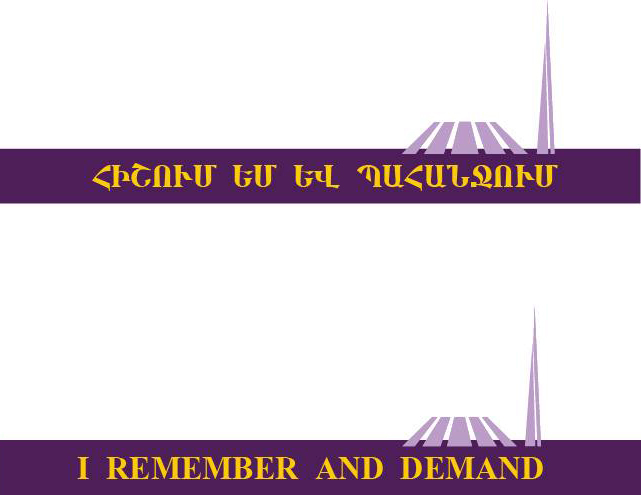
On the Eve of 105th Anniversary of Armenian Genocide
13.04.2020
Dear compatriots,
The call of Armenian Genocide Museum-Institute on the eve of the 105th anniversary
of Armenian Genocide clearly states: “The Armenian Genocide has long gone beyond
ethnic memory that is – only being a crime against the Armenian people, of being a
mere Armenian tragedy; it is a universal tragedy, one of the greatest crimes against
humanity. It is an evil, the international recognition and condemnation of which, as well
as the issue of the elimination of the consequences, are to be found within the realm of
the struggle for justice”.

On the Eve of 105th Anniversary of Armenian Genocide
06.04.2020
Dear compatriots,
April 24th, the day of remembrance of the martyrs of the Armenian Genocide, is approaching.
The citizens of the Republic of Armenia, the entire Armenian people will be commemorating the 105th anniversary of the Armenian Genocide. This commemoration will be joined by friends of the Armenian people in all corners of the world.

The Activities of the Mother See of Holy Etchmiadzin
31.03.2020
As of 1915, about 60.000 Armenian refugees and 3.000 orphans found shelter on the territory of the Mother See of Holy Etchmiadzin. Earlier, on 28 December 1914, the Holy Etchmiadzin Fraternal Relief Committee was created by means of the Catholicos of All Armenians Gevorg V Surenyants’ Kondak (Decree), in order to cover refugee needs. Committees were set up in the dioceses of Yerevan, New Nakhichevan and Bessarabia, Old Nakhichevan, Alexandropol, Atrpatakan and Vaspurakan, as well as supporting organizations and committees in Pyatigorsk, Odessa, Tiflis and other places.
In spring 1915 the Holy Etchmiadzin Fraternal Relief Committee sent financial assistance to the province of Van.

The Rescue Home of the League of Nations:
Prestigious Organizations of the Time React to the Armenian Genocide
28.03.2020
Genocide perpetrated against the Armenian population of the Ottoman Empire was both gender-oriented and age-oriented. While the Armenian male population was generally killed before or at the beginning of deportation, women and children, as well as being massacred, were also subjected to different forms of physical and sexual violence during the death marches. Children and young women were also forcibly transfered to the enemy group.
Deportation caravans consisting mainly of women and children intentionally were not guarded such that Turks, Kurds and Arabs were able to take women and children by force.
Dear visitor
The Armenian Genocide Museum - Institute will be closed till April 16, 2020 (preliminary data).
Sincerely,
The Armenian Genocide Museum-Institute Foundation

The Power of Unity in the Name of the Salvation of Remnants
of the Armenian People
25.03.2020
In the summer and autumn of 1915, as a result of the deportation of the peaceful population of Western Armenia and the Armenian-populated areas of the Ottoman Empire during the Armenian Genocide, a great mass of Armenians found themselves in the Syrian deserts. During the Genocide the Armenians were not only facing physical destruction but the danger of assimilation as well.
vTens of thousands of Armenian women and children were subjected to sexual violence and converted to Islam, gradually losing their national identity in the Islamic environment. Orphanages were established by Turkish state funds for Armenian orphans throughout the Ottoman Empire by the command and under the direct control of the Young Turk Government, where Armenian children were Turkified and Islamized.
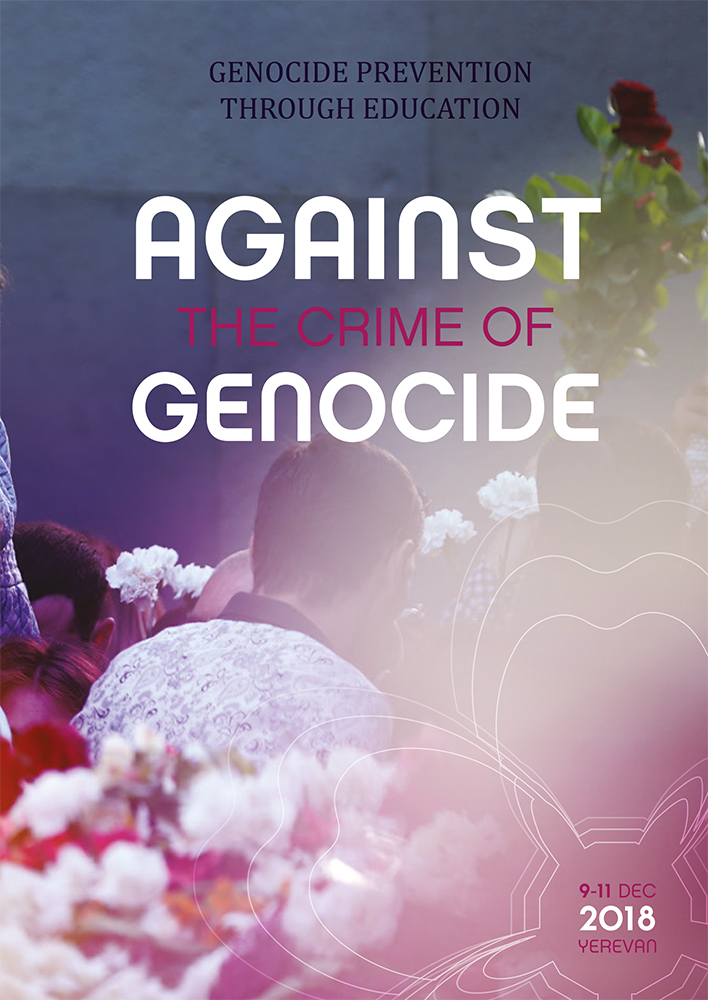
The proceedings of the Global Forum "Against the Crime of Genocide" on the online platform
24.03.2020
On 9-11 December 2018, the third Global Forum “Against the Crime of Genocide” was held in Yerevan.
The Ministry of Foreign Affairs of the Republic of Armenia has published an illustrated volume summarizing the activities of the forum. An electronic version of the volume is now available, with the print version coming soon. The Armenian Genocide Museum-Institute has also contributed to the volume. See the volume through the following link: http://www.genocideprevention.am/sites/default/files/genocide_prevention_through_education._third_global_forum.pdf
During the panel on “The Museums and Genocide; Perpetuating the Memory of the Genocide Victims and Facilitating the Prevention Process” Harutyun Marutyan, Doctor of Historical Sciences and Director of the Armenian Genocide Museum-Institute Foundation delivered a speech titled “Museums and Genocide: Supporting Genocide Prevention through Perpetuation of Remembrance Days of Genocide Victims. A View from Yerevan".

Dealing With the Trauma of an Undigested Past
Regina Galustyan's observations on the international conference
She is the PhD student and researcher at the Educational Department, Armenian Genocide Museum-Institute Foundation
19.03.2020
The Ministry of Foreign Affairs (MFA) of Lithuania in collaboration with Andrei Sakharov Research Centre of Vytautas Magnus University, the Psychology Institute of Vilnius University organized a conference titled “Dealing with the trauma of an undigested past” on March 5-6, in Vilnius. The purpose of the conference, opened by the two-term president of Lithuanian Republic Valdas Adamkus (1998-2003, 2004-2009), was to look into the scope of trauma, to discuss its impact on the collective psyche, explore the success and failure of larger entities, particularly nations' in addressing the traumatic effects. The problem of the conference was formulated in the following question: psychotherapy provides tools to individuals to overcome personal traumas, is it possible to use the same tools to help a nation to overcome collective trauma of war, genocide, massacre, or political oppression?
The conference was divided into four sessions where renowned scholars, artists, writers tried to share their own understanding of collective trauma, its causes and methods of probable healing.
Dear visitor
The Armenian Genocide Museum-Institute will be closed from March 15 till 23, 2020.
According to preliminary data, the Museum will be open from March 24.
Sincerely,
The Armenian Genocide Museum-Institute Foundation

Ambassador of Canada Pays Tribute to the Memory of Armenian Genocide Martyrs
10.03.2020
Recently Ambassador Extraordinary and Plenipotentiary of Canada to Armenia Alison Marie LeClaire paid a private visit to the Armenian Genocide Memorial and the Museum.
Ambassador LeClaire laid a wreath at the Genocide Monument and then put flowers at the Eternal Fire.
Canadian Ambassador was accompanied by the AGMI Deputy Director Edita Gzoyan, who presented to the guests the history and symbolism of the Genocide Monument.
Dear visitor,
The museum will be closed on March 8.
Sincerely,
The Armenian Genocide Museum-Institute Foundation

AGMI Researcher Narek Poghosyan Participated in an International Conference
05.03.2020
On 24-26 February 2020, AGMI researcher Narek Poghosyan participated in an international conference “Making Sense of Violence in the Digital Age” at Gdansk University. Narek Poghosyan presented a speech titled “The possible risk of genocide and mass killings in the context of artificial intelligence development”.
The rapid development of technology, particularly the use of artificial intelligence in recent years has raised serious concerns among experts. The ability of machines to self-thinking and decision-making, along with its benefits, poses many dangers to mankind.

RA Political and Spiritual Leadership paid tribute to the memory of victims of the Sumgait Pogroms
28.02.2020
On February 28, on the occasion of the 32nd anniversary of the Armenian pogroms in Sumgait in 1988 from 27 to 29 February, RA Prime Minister Nikol Pashinyan with Chatholicos of All Armenians Garegin II, Deputy Prime Ministers Tigran Avinyan, Mher Grigoryan and other prominent officials visited Tsitsernakaberd hill and paid tribute to the victims of the crime.
The Prime Minister and Chatholicos laid wreaths and put flowers at the memorial of Sumgait victims, honoring the memory of the innocent martyrs.

President of the Moldovan Parliament Paid Tribute at the Armenian Genocide Memorial
24.02.2020
On February 24, within her official visit to Armenia, President of the Moldovan Parliament Zinaida Greceanîi has visited the Armenian Genocide Memorial Complex accompanied with Deputy Speaker of the National Assembly of the Republic of Armenia Lena Nazaryan and Head of Armenia-Moldova Friendship Group Armen Pambukhchyan.
The delegation was welcomed by the AGMI guide Lusine Tunyan, who also presented the history and symbolism of the Genocide Memorial.
The guests laid flowers at the eternal fire and honored the memory of the innocent martyrs with a minute of silence.

Minister of Foreign and European Affairs of the Slovak Republic Visited the Armenian Genocide Memorial
24.02.2020
During his official visit to Armenia, Minister of Foreign and European Affairs of the Slovak republic Miroslav Lajčák visited the Armenian Genocide Memorial and paid tribute to the memory of the Holy Martyrs.
The high-ranking guests were accompanied by Deputy Foreign Minister of the Republic of Armenia Avet Adonts.
Miroslav Lajčák laid a wreath at the Genocide Memorial, after which members of the delegation put flowers at the eternal fire.

Syrian Parliament adopts resolution recognizing and condemning the Armenian Genocide
13.02.2020
On 13 February, the Syrian Parliament unanimously adopted a resolution recognizing and condemning the Armenian Genocide.
The resolution was introduced by the Syria-Armenia Parliamentary Friendship Committee, chaired by the Armenian deputy of the Syrian parliament, Dr. Nora Arisyan.
It should be noted that the resolution clearly uses the term "Armenian Genocide" and recognizes and condemns it.

2020 Educational Program for Schools has been launched
07.02.2020
Speaker: Tehmine Martoyan, PhD in History, AGMI senior researcher.
Theme: Genocides of Christian nations: The Greek Genocide.
School: School No 190 after Galust Gylbenkyan, 11th grade, biochemistry group.
On 7 February, at AGMI Conference Hall, the first meeting of the Educational Program took place. AGMI senior researcher Tehmine Martoyan presented to the high school students a lecture dedicated to the genocides of the Christian nations, titled “Genocides of Christian nations: The Greek Genocide”.

René Pinon 150
You fought heroic battles to protect your ancient culture, honor and religion…
05.02.2020
All the most savage and deplorable human passions find their fulfillment at the expense of a miserable, gradually melting mob that is being annihilated. Even if some people reach Mesopotamia, they will remain in the desert or in marshy places with no shelter or food…
The heat and the humidity are finally destroying those miserable people who are accustomed to a harsh but healthy mountain climate…
The last remnants of the caravans of Armenians found their salvation, dying of fever and poverty…

Winter School for Tourist Guides 2020
Two-Day Training Program on Armenian Genocide Started at AGMI
01.02.2020
Today a two-day winter school with courses designed for tourist guides was launched at the conference hall of the Armenian Genocide Museum-Institute at the initiative of the Armenian Association of Professional Tourists Guides and in cooperation with the Armenian Genocide Museum-Institute. The first meeting was held on 1 February.
AGMI Director Harutyun Marutyan welcomed the participants and wished them a fruitful work.
Nearly 50 tourist guides had an opportunity to hear different lectures on the Armenian Genocide, enrich their knowledge and direct their questions to the speakers.

Holocaust Remembrance Has Been Launched at the AGMI
29.01.2020
For the first time, the Armenian Genocide Museum-Institute has organized a Holocaust Remembrance Week dedicated to the 75th anniversary of the liberation of Auschwitz-Birkenau concentration camp and the end of World War II.
Today the first meeting took place at the AGMI Conference Hall.
The opening speech was delivered by the AGMI Director Harutyun Marutyan, who stressed:
“On January 24, we attended the event near the Monument to the Holocaust and Genocide Victims, where we paid tribute to the memory of the Holocaust victims. In the near future we will try to organize also temporary exhibitions during those commemoration weeks”.

Memorial Events Dedicated to Holocaust Victims
25.01.2020
On January 24, the Jewish community in Armenia headed by Rima Varjapetyan gathered at the monument of the Holocaust and Armenian Genocide victims to pay tribute to the memory of the Holocaust martyrs.
The event was attended also by Harutyun Marutyan, Director of Armenian Genocide Museum-Institute Foundation, as well as Hayk Kotanjyan, Lieutenant General, Head of the Armenian-Jewish Forum, Professor, Jonathan Lacot, Ambassador Extraordinary and Plenipotentiary of France to the Republic of Armenia, representatives of other national minorities residing in the Republic of Armenia and prominent figures.
The opening speech was made by Mrs. Varjapetyan.
Dear visitor,
The Armenian Genocide Museum-Institute will be closed on January 28th.
Sincerely,
The Armenian Genocide Museum-Institute Foundation

The Netherlands' Foreign Minister Paid Tribute
23.01.2020
On 23 January, within his official visit to the Republic of Armenia, Stef Blok, the Minister of Foreign Affairs of the Kingdom of the Netherlands, accompanied by Avet Adonts, the Deputy Foreign Minister of the Republic of Armenia, and Tigran Balayan, the Ambassador Extraordinary and Plenipotentiary of the Republic of Armenia to the Netherlands, visited the Armenian Genocide Memorial.
The delegation was welcomed by AGMI Director Harutyun Marutyan, who also presented the history and symbolism of the Genocide Monument.
Mr. Blok laid a wreath at the Genocide Monument, and members of the accompanying delegation put flowers at the Eternal Fire honoring the memory of the innocent martyrs with a minute of silence.

Members of the Congress of Mexico Paid Tribute to the Memory of the Armenian Genocide Martyrs
22.01.2020
On 21 January, within the framework of a working visit to the Republic of Armenia, Adolfo Torres Ramirez, the Chairman of the Parliamentary Friendship Group of the Congress of Deputies of the House of Representatives of Mexico, accompanied with the Head of the Armenia-Mexico Friendship Group of the National Assembly of the Republic of Armenia Nora Arustamyan visited the Armenian Genocide Memorial.
Mr. Ramirez and the accompanying delegation were welcomed by AGMI Director Harutyun Marutyan, who also presented the history and symbolism of the Genocide Monument.

Holocaust Remembrance Week
21.01.2020
Dedicated to the 75th anniversary of the liberation of Auschwitz-Birkenau concentration camp and the end of World War II.
Armenian Genocide Museum-Institute
24-31 January 2020
24 January, at 14:00
Gathering of the Jewish community of Armenia near the monument dedicated to the victims of the Holocaust and the Armenian Genocide (Oghakadzev park, at the corner of Moskovyan and Teryan streets).
29 January, 14:00- 15:30
Armenian Genocide Museum-Institute, Conference Hall

Article of the AGMI researchers Edita Gzoyan, Regina Galustyan and Shushan Khachatryan is Published in a Prestigious International Journal
18.01.2020
2020 was launched with a great scientific achievement for the AGMI.
An article by the AGMI researchers Dr. Edita Gzoyan (AGMI Deputy Scientific Director, Regina Galustyan (PhD student at the AGMI, researcher), Dr. Shushan Khachatryan (Head of the AGMI Armenian Genocide Victims’ Documentation and Data Collection Department) titled “Reclaiming Children after the Armenian Genocide: Neutral House in Istanbul” was published in the prestigious “Holocaust and Genocide Studies” journal.
Famous genocide scholars have published their work in this journal, among them prominent Armenian scholars and researchers Vahagn Dadrian, Vigen Guroyan, Ruben Paul Adalyan, Peter Balakian.

AGMI director Harutyun Marutyan participated in international conference on genocide prevention in Greece
08.01.2020
On 6-8 December 2019, Director of the Armenian Genocide Museum-Institute Harutyun Marutyan participated in International Conference on the Crime of Genocide organized by the Pan-Pontian Federation of Greece.
The conference days were specially chosen to precede the UN International Day of Commemoration and Dignity of the Victims of the Crime of Genocide and of the Prevention of this Crime, 9 December. 2019 marks the 100th centennial of the Genocide of the Greeks of Pontus, a Black Sea region in the Ottoman Empire.
The “International Conference on the Crime of Genocide” was structured in two thematic areas.

U.S. Senate Unanimously Recognizes Armenian Genocide
12.12.2019
The U.S. Senate struck a historic blow today against Turkey’s century-long obstruction of justice for the Armenian Genocide, unanimously adopting S.Res.150, an Armenian National Committee of America (ANCA)-backed measure that locks in ongoing U.S. recognition of this crime.
The resolution, identical to a measure (H.Res.296) adopted 405 to 11 in the U.S. House in October, officially rejects Turkey’s denials of its genocide against Armenians, Greeks, Assyrians, Chaldeans, Syriacs, Arameans, Maronites, and other Christian nations. Passage of the resolution – spearheaded by Senators Robert Menendez (D-NJ) and Ted Cruz (R-TX) – marks the first time that the Senate has recognized the Armenian Genocide.
| 




